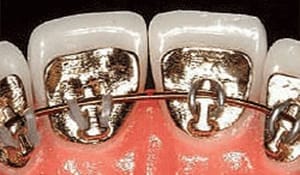Home - All About Braces - The Different Types of Dental Braces
Five Types of Dental Braces
Orthodontic treatments have evolved significantly, offering various options to cater to different needs and preferences. Understanding the types of dental braces available can help you make informed decisions about your orthodontic care.
Dental Brace Types
1. Traditional Metal Braces

Metal braces are the most common type, known for their effectiveness in treating various orthodontic issues. They consist of metal brackets and wires that gradually move teeth into desired positions.
2. Cermaic Braces

Ceramic braces function similarly to metal braces but feature tooth-colored or clear brackets, making them less noticeable. They are popular among individuals seeking a more discreet orthodontic solution.
3. Self-Ligating Braces

Self-ligating braces resemble traditional metal braces but use a specialized clip instead of elastic bands to hold the wire in place. This mechanism can reduce friction and may shorten treatment time.
4. Lingual Braces

Lingual braces are attached to the back (lingual side) of the teeth, making them invisible from the front. They offer a cosmetic alternative for those concerned about the appearance of braces.
5. Clear Aligners

Clear aligners, such as Invisalign and Clarity Advanced, are custom-made, removable trays that gradually shift teeth into alignment. They are nearly invisible and offer flexibility, especially for adults and teens.
Choosing the Right Braces
Selecting the appropriate type of braces depends on various factors, including the severity of the dental issue, aesthetic preferences, lifestyle, and budget.
Schedule your no-obligation orthodontic consultation below and receive your personalized treatment plan at our Bluffdale, West Jordan, Riverton, or Stansbury Park office.
Claim Your Complimentary Consultation
Complete the form or call (801) 254-9700 to schedule. You’ll receive a complimentary orthodontic exam with imaging and learn which treatment type(s) suit you best.